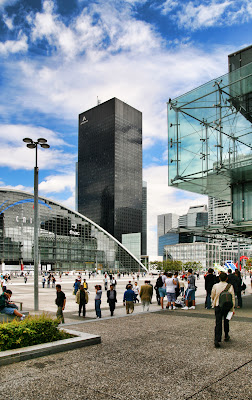 |
| Courtesy: www.sxc.hu |
For the best part of the last 30 years, super tall skyscraper “city buildings” have been envisioned and even fully planned and designed by many organisations the world over. Although none of these have yet to fully come to fruition in terms of housing permanent residents, whose every need can be met within one building – in theory meaning they would never have to leave the construction – there are a number of multi-use skyscrapers around the world that indicate what we can expect if such a building is ever built.
What are the advantages and disadvantages of such buildings, and will the increasing global population reach a point where such constructions are necessary to avoid global overcrowding?
The Case For
 |
| Courtesy: www.sxc.hu |
The biggest advantages of such buildings would be that increased land prices around the world could make housing in these structures more accessible. If a construction company or land developer, for example, was able to build a tall enough building on a large enough piece of land, the money they could make from commercial residents of the building would likely be enough to allow them to offer permanent residence to the general population at a very affordable cost.
As well as being more affordable, the potential designs of these buildings are based on them all being fully sustainable, meaning there would be no additional carbon footprint or emissions from the building, with them all being reused and offset within the construction itself.
Naturally, as with any high profile ideas, this comes with its disadvantages, too.
Why They Are a Bad Idea
 |
| TRY4000 MegaCity Pyramid |
Many of these proposed vertical cities have been envisioned as being in the Far East. This itself causes its own problems, as this notoriously active earthquake and volcano zone could cause huge issues for buildings. One of the most widely-known ideas, the TRY 4000 Mega City Pyramid in Tokyo, was widely lauded for its protection from tsunami, for example, yet a violent earthquake hitting Tokyo itself has the potential to send the building and its residents into the sea.The other issue would be deciding the ultimate use for the residential sections of these buildings, and more crucially who would live there. In the likely event that wealthier people would look to live in these buildings, would that lead to a focus more directed towards these structures, and lead to a long term scenario where “real world” cities become slum-like, housing only those who cannot afford the higher luxuries.
It is clear that there are moral questions to answer despite the exciting technological possibilities that come from such structures, and strong leadership around these issues could ultimately decide whether or not they ever happen in reality.
Harworth Estates are one of the largest landowners in the UK providing residential and commercial properties, industrial units, office space, development land. They've also got a diverse range of development sites ideally positioned for mixed use developments and emerging environmental technologies including low carbon energy projects.
